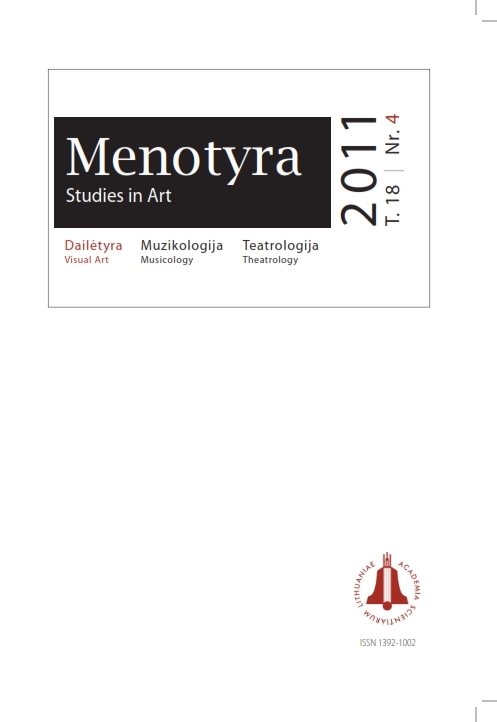Šiaurės modernizmo įtaka „lietuviškajai architektūros mokyklai“ 1959–1969 m.
The influence of Nordic modernism on the formation of the Lithuanian school of modern architecture in 1959-1969
Author(s): Marija DrėmaitėSubject(s): Education, Fine Arts / Performing Arts, Architecture, Sociology of Art
Published by: Lietuvos mokslų akademijos leidykla
Keywords: Lithuanian school of modern architecture; modernism in Lithuania; Nordic architecture; Lazdynai, block of the Composers’ Union; Čekanauskas; Brėdikis; Vällingby; Tapiola
Summary/Abstract: The paper focuses on the contemporary question of the Soviet culture about the formation of the Lithuanian school of modern architecture in the period of transition from Stalinist architecture into contemporary style (1959–1969). The period is featured as a search for a modernist and national expression in architecture. Nordic architecture, especially Finnish and Swedish, played an important role in this process because of the possibility to experience Finnish modern architecture at first hand during the study trips in 1959–1964. Also, knowledge about Nordic modern architecture was of high interest and available from international architectural magazines due to expanding connections with the West. Two case studies are described in the paper: the terraced houses and a hall of the Lithuanian Composers’ Union as one of the most Finnish-influenced examples, and a large suburban housing estate Lazdynai, which combines both Finnish (Tapiola) and Swedish (Vällingby) planning ideas with the settling in the forest and terrain. The research leads to a conclusion that Nordic regionalism was an acceptable solution for Lithuanian architects since it combined modernist design with regional tradition and thus expressed their aspiration for national expression.
Journal: Menotyra
- Issue Year: 18/2011
- Issue No: 4
- Page Range: 308-328
- Page Count: 21
- Language: Lithuanian

